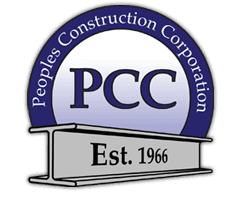Legal Costs – One contract is administered, instead of two in the case of Design-Bid
Materials – The contractors and their subs/suppliers are the entities purchasing the materials. They have first-hand knowledge of what material costs are, and how they compare to competing materials in their market. The worst case scenario for a construction material is where the specified material can only be purchased from one supplier. These types of products are almost always more expensive, and have long lead times. We have found that most of these types of products have a functional equivalent that may have only a slight difference in appearance, or some other parameter. Designing and specifying products that are widely available from different manufacturers always results in a costs savings.
Even if some products are priced the exactly the same on a unit price basis, other factors can affect their “in-place” cost. If a material has a long lead time (imported from overseas, for example), extra quantity must be ordered in case there is a shortage during installation. If one runs a little short on a material at the end of their work, there is no time to order a small quantity of additional material to finish the job. The responsible company must order extra material as a buffer. A product that is quick ship, or available locally, can be ordered on a “just in time” basis. It can then be positioned as needed near the area that it is to be installed in. This helps reduce interference with other trades, eliminates the labor needed to move or double handle large quantities of product, reduces breakage due to handling, and reduces chances of job site theft.
In sum, while there can be two different floor tiles that cost the exact same on a “per square foot” basis, the imported tile will cost the owner more in the end than the domestically available tile. Designers and Architects do not buy materials, and therefore don't have access to the detailed knowledge of “in place” costs that contractors can provide up front.
Installation Methods – Does a material require an unusual amount of labor to install? Does it require a special tool to install? Does a material tend to have more breakage during the installation process because of a specified installation method? Extra materials (waste factor) have to be ordered to compensate for these occurrences, and designers, again, don't have access to this kind of specialized knowledge.
As an example, hard tile laid on a 45 degree angle requires a higher waste factor than laying that same hard tile “straight.” Some of the tiles are going to break during the field cutting process. Also, a 45 degree lay requires more time and labor to layout. So, this one change in method has added cost in both materials and labor, even if the same product is specified.
Sequencing – Construction is most cost efficient when the products can be installed in a certain order. If a product must be installed sooner than what is optimal, that product must be protected from damage by other construction activities. This is a real cost that is introduced into the project. Some designs require products to be installed in a less than ideal order. A design may require a trade to mobilize to the site and do a portion of their work, then wait on another trade before they can return to finish their work. It is most cost efficient when a crew can start and complete their work in the fewest mobilizations possible.
Equipment – A special product often requires specialized equipment to install. This equipment must be rented or purchased by the subcontractor doing the installation. By its very nature, special equipment is not mass produced, and is not utilized often over time. This makes the equipment expensive to rent or own. This adds construction cost to the owner.
Time – The old saying that “time is money” is true. With the time compression of Design-Build over Design-Bid, the owner is saving construction interest costs throughout the construction phase. Also, there is an opportunity cost of not having a facility online for its intended use. The project would not happen at all if there was not a need in the first place. How much profit was lost by not having that new facility open sooner?
Change Order Costs – Numerous studies have shown that Design-Build projects have less change orders than Design-Bid projects. These studies also found that the Design-Build projects' overall costs increased less because of change orders. At Peoples Construction, we noted in 2016 that a Design-Bid medical project we built had seven change orders. Our average Design-Build medical project in 2016 had 2.5 change orders.
Earlier Determination of Cost – Design-Bid allows an owner to pin down their project cost earlier in the overall process. This saves on redesign costs, allows more time to arrange banking, and can guard against interest rate increases.

